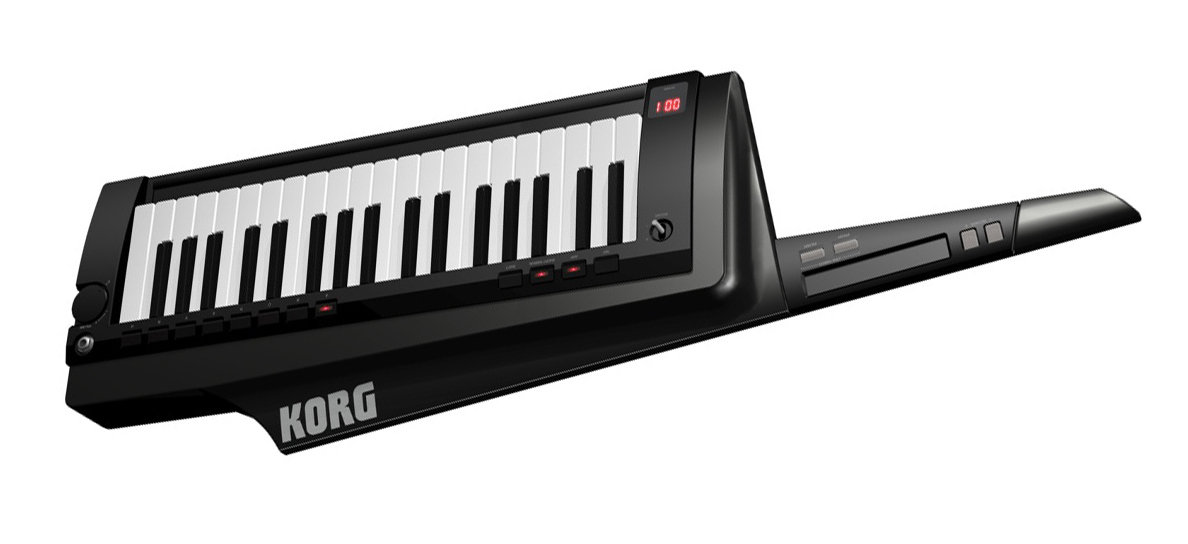Probably the earliest version of the ‘Keytar’ as it has become known as these days was from Weltmeister, a German company that produced an instrument called the Bassist in 1963, designed to allow bass players to add keyboard lines with a somewhat familiar feel to the added instrument they would use. It wasn’t long after this before anyone and everyone was jumping on the trend, with plenty of compact synthesizers in the 80’s having optional hand grips and strap pins to allow them to be converted into the guitar styled instrument. Korg released the RK-100 and Yamaha brought out the SHS-10, these two proving to be of the more popular units, both gathering cult status and still fetching good money on the second-hand market today. This is especially so when you look for rarer revisions that came in the less common colours. You can often pay premium prices for some of these keytars which are often not much more than museum pieces these days.
But, a couple of years back, Korg got everyone’s attention with the announcement of the RK-100S, a revised beast that would share plenty of the cool factor of the original, but was a totally new instrument in its own right. The RK-100S was an instant hit, with pop culture junkies, hopeless old romantics and the new wave of kids all wanting a piece of this cool new instrument. Well, that was short-lived as demand far outweighed production capabilities and the Australian market in particular suffered greatly with very few units ever actually making it to our shores. Plenty of us were kept waiting, and wait we did. With manufacturing issues in the painting process, later releases of the RK-100S were stalled and stalled again. Korg were not keen to continue production until everything was perfect with this keyboard, as was the case with the slow release of both their MS-20MINI and the ARP Odyssey re-issues. There is one thing Korg are always on top of and that is getting their quality in manufacturing and design the way they want it. Early Japanese production runs ensure the device is built to an exacting standard and because of this, later releases of the RK-100S were not seen in Australia until late this year, with certain quantities starting to dribble through.
So, now more than 30 years after its original releases, the newly revised RK-100S is available again. What you get now is a more modern take on a classic design. The look and feel of the old model is still there, but with sharp new lines and smooth edges that take the previously futuristic look and bring it into the present, if that makes any sense at all. Two ribbon controllers have been included for pitch and modulation control, and a vocoder is also on board because Korg seem to be making a habit of that fun tool in the last ten or so years, and why not really. The RK-100S is all about having fun.
What is most notable about this new model compared to the older one is the fact that is does have its own inbuilt sound model. It is not a MIDI controller, but an analogue modelling synth engine in a very cool casing. With sounds that have a very MS-2000 sort of feel to them, and a whole heap of more modern sounds too, this is undoubtable recognisable as a Korg synthesizer, just in a less recognisable shell to what we have been use to lately. The addition of the favourites button allows you to recall sounds that you love quickly and easily, because after all, this is a performance keyboard. Sure, it might get some use in the studio from time to time, for at the end of the day, the RK-100S wants to be on a stage and demands to be seen. With three colours including bright red and a glaring white, under stage lights, it is going to be pretty hard to miss one of these puppies, that is for sure.







